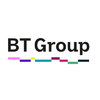Filter interviews by
Bharti Airtel Assistant Manager Network Interview Questions and Answers
14 Interview questions
LTE attach procedure is the process of a device connecting to the LTE network and obtaining an IP address.
The device sends an attach request to the LTE network.
The network validates the request and assigns a temporary identifier to the device.
The network sends an attach accept message to the device, which includes the assigned identifier and an IP address.
The device acknowledges the attach accept message and compl...
I analyze network data to identify areas with high PS drops and work on optimizing those areas.
Analyze network data to identify areas with high PS drops
Optimize network parameters such as RSRP, RSRQ, SINR, etc.
Check for interference and adjust antenna tilt and azimuth
Ensure proper handover parameters are set
Perform drive tests to validate improvements
Collaborate with other teams such as RF and Core to resolve issu...
We ensure accessibility improvement in LTE network through various measures.
Conducting regular network audits to identify areas of improvement
Deploying small cells and repeaters to improve coverage in remote areas
Implementing carrier aggregation to increase network capacity
Providing network optimization services to improve network performance
Collaborating with device manufacturers to ensure compatibility with our ...
I ensure proper parameter tuning, interference management, and capacity planning for LTE network throughput improvement.
Regularly monitor network KPIs to identify areas of improvement
Optimize network parameters such as handover parameters, antenna tilt, etc.
Implement interference management techniques such as interference coordination, power control, etc.
Perform capacity planning to ensure sufficient resources are...
What people are saying about Bharti Airtel






SIP call flow in VoLTE involves signaling between UE, IMS, and PSTN networks.
UE sends INVITE message to IMS network
IMS network authenticates and authorizes the user
IMS network sends INVITE message to PSTN network
PSTN network sends ringing message to IMS network
IMS network sends ringing message to UE
When call is answered, media flow is established between UE and PSTN network
Call teardown involves exchange of BYE me...
VoLTE e2e call flow is the process of establishing a voice call over LTE network.
The call is initiated by the user and the device sends a SIP invite message to the IMS network.
The IMS network authenticates the user and sends a SIP 180 ringing message to the device.
Once the called party answers, the IMS network sends a SIP 200 OK message to the device.
The device then sets up the media path and sends a SIP ACK messa...
VoLTE uses various speech codecs for efficient voice transmission.
AMR-WB (Adaptive Multi-Rate Wideband) codec is widely used in VoLTE.
Other codecs used include EVS (Enhanced Voice Services), Opus, and G.711.
The choice of codec depends on factors such as network capacity, device compatibility, and call quality requirements.
The mobile network operator has major involvement in SRVCC.
SRVCC stands for Single Radio Voice Call Continuity
It is a feature that allows a seamless handover of voice calls from LTE to 3G or 2G networks
The mobile network operator is responsible for implementing and supporting SRVCC
There are 3 MCS (Modulation and Coding Schemes) in LTE.
MCS 1: QPSK modulation with coding rate of 1/2
MCS 2: 16QAM modulation with coding rate of 1/2
MCS 3: 64QAM modulation with coding rate of 2/3
Higher MCS values indicate higher modulation and coding rates
The selection of MCS depends on the channel quality and available bandwidth
I have worked on LTE & VoLTE features such as QoS, SRVCC, CSFB, TTI bundling, etc. and their related parameters.
QoS parameters such as ARP, QCI, GBR, MBR, etc.
SRVCC parameters such as HO margin, HO failure threshold, etc.
CSFB parameters such as timer values, RAT priority, etc.
TTI bundling parameters such as bundle size, bundle factor, etc.
VoLTE parameters such as AMR codec modes, RTP packetization, etc.
UE categori...
Bharti Airtel Assistant Manager Network Interview Experiences
1 interview found
I applied via Company Website and was interviewed in Jul 2019. There were 4 interview rounds.
Interview Questionnaire
15 Questions
- Q1. What is your current job profile? And what you do on regular basis for network improvement in allotted areas?
- Ans.
As an Assistant Manager Network, I oversee network operations and implement strategies for continuous improvement in performance and reliability.
Conduct regular network performance assessments to identify bottlenecks and areas for improvement.
Implement network monitoring tools, such as SolarWinds or Nagios, to proactively manage network health.
Collaborate with cross-functional teams to ensure alignment on network requi...
- Q2. What is LTE attach procedure?
- Ans.
LTE attach procedure is the process of a device connecting to the LTE network and obtaining an IP address.
The device sends an attach request to the LTE network.
The network validates the request and assigns a temporary identifier to the device.
The network sends an attach accept message to the device, which includes the assigned identifier and an IP address.
The device acknowledges the attach accept message and completes ...
- Q3. What is difference between CFRA & CBRA? Can we fetch CFRA & CBRA success rate separately for RACH?
- Ans.
CFRA and CBRA are different algorithms used in RACH. Success rates can be fetched separately.
CFRA stands for Contention Free RACH Algorithm, while CBRA stands for Contention Based RACH Algorithm.
CFRA is used for devices with higher priority, while CBRA is used for devices with lower priority.
Success rates for CFRA and CBRA can be fetched separately by analyzing the RACH logs.
CFRA success rate is usually higher than CBR...
- Q4. What you do for accessibility improvement in LTE network?
- Ans.
We ensure accessibility improvement in LTE network through various measures.
Conducting regular network audits to identify areas of improvement
Deploying small cells and repeaters to improve coverage in remote areas
Implementing carrier aggregation to increase network capacity
Providing network optimization services to improve network performance
Collaborating with device manufacturers to ensure compatibility with our netwo...
- Q5. What you do for PS Drop improvement in LTE network?
- Ans.
I analyze network data to identify areas with high PS drops and work on optimizing those areas.
Analyze network data to identify areas with high PS drops
Optimize network parameters such as RSRP, RSRQ, SINR, etc.
Check for interference and adjust antenna tilt and azimuth
Ensure proper handover parameters are set
Perform drive tests to validate improvements
Collaborate with other teams such as RF and Core to resolve issues
Imp...
- Q6. What you do for integrity (Throughput) improvement in LTE network?
- Ans.
I ensure proper parameter tuning, interference management, and capacity planning for LTE network throughput improvement.
Regularly monitor network KPIs to identify areas of improvement
Optimize network parameters such as handover parameters, antenna tilt, etc.
Implement interference management techniques such as interference coordination, power control, etc.
Perform capacity planning to ensure sufficient resources are avai...
- Q7. What are HARQ & TTI Bundling? How these works & what is value set for HARQ in your network? and what are related parameters of TTI Bundling & their values?
- Ans.
HARQ & TTI Bundling are techniques used in wireless communication to improve data transmission efficiency.
HARQ stands for Hybrid Automatic Repeat Request and is used to improve the reliability of data transmission by retransmitting erroneous packets.
TTI Bundling stands for Transmission Time Interval Bundling and is used to reduce latency by transmitting multiple packets in a single transmission time interval.
The value ...
- Q8. What is VoLTE e2e call flow?
- Ans.
VoLTE e2e call flow is the process of establishing a voice call over LTE network.
The call is initiated by the user and the device sends a SIP invite message to the IMS network.
The IMS network authenticates the user and sends a SIP 180 ringing message to the device.
Once the called party answers, the IMS network sends a SIP 200 OK message to the device.
The device then sets up the media path and sends a SIP ACK message to...
- Q9. Explain SIP call flow in VoLTE?
- Q10. Which entity has major involvement in SRVCC?
- Ans.
The mobile network operator has major involvement in SRVCC.
SRVCC stands for Single Radio Voice Call Continuity
It is a feature that allows a seamless handover of voice calls from LTE to 3G or 2G networks
The mobile network operator is responsible for implementing and supporting SRVCC
- Q11. What are speech codecs being used in VoLTE?
- Ans.
VoLTE uses various speech codecs for efficient voice transmission.
AMR-WB (Adaptive Multi-Rate Wideband) codec is widely used in VoLTE.
Other codecs used include EVS (Enhanced Voice Services), Opus, and G.711.
The choice of codec depends on factors such as network capacity, device compatibility, and call quality requirements.
- Q12. Which features in LTE & VoLTE you have worked & what are values set for related parameters? Explain any 8 to 10 out of them.
- Ans.
I have worked on LTE & VoLTE features such as QoS, SRVCC, CSFB, TTI bundling, etc. and their related parameters.
QoS parameters such as ARP, QCI, GBR, MBR, etc.
SRVCC parameters such as HO margin, HO failure threshold, etc.
CSFB parameters such as timer values, RAT priority, etc.
TTI bundling parameters such as bundle size, bundle factor, etc.
VoLTE parameters such as AMR codec modes, RTP packetization, etc.
UE categories an...
- Q13. How many MCS are there in LTE?
- Ans.
There are 3 MCS (Modulation and Coding Schemes) in LTE.
MCS 1: QPSK modulation with coding rate of 1/2
MCS 2: 16QAM modulation with coding rate of 1/2
MCS 3: 64QAM modulation with coding rate of 2/3
Higher MCS values indicate higher modulation and coding rates
The selection of MCS depends on the channel quality and available bandwidth
- Q14. What I key difference in FDD & TDD network?
- Ans.
FDD and TDD are two different duplexing techniques used in wireless communication networks.
FDD stands for Frequency Division Duplexing while TDD stands for Time Division Duplexing.
In FDD, separate frequency bands are used for uplink and downlink communication while in TDD, the same frequency band is used for both uplink and downlink communication.
FDD is commonly used in 3G and 4G networks while TDD is commonly used in ...
- Q15. What is maximum throughput we can achieve in LTE network with 20MHz TDD bandwidth?
- Ans.
The maximum throughput in LTE network with 20MHz TDD bandwidth depends on various factors.
Theoretical maximum throughput is 1.6 Gbps
Practical maximum throughput is around 1 Gbps
Actual throughput depends on factors like signal strength, interference, number of users, etc.
Carrier aggregation and MIMO can increase throughput
Real-world throughput can be measured using tools like speedtest.net
Interview Preparation Tips
Skills evaluated in this interview
Interview questions from similar companies

Interview Questionnaire
2 Questions
- Q1. Tell me about yourself
- Q2. Why do you want this job?

I applied via Company Website and was interviewed in Sep 2020. There were 5 interview rounds.
Interview Questionnaire
2 Questions
- Q1. Basics
- Q2. Work experience and job profile
Interview Preparation Tips

Interview Questionnaire
1 Question
- Q1. Only about previous job IoT / M2M Journey.

I applied via Referral and was interviewed in Dec 2020. There was 1 interview round.
Interview Questionnaire
1 Question
- Q1. How do you sale nokia phone to that customer who wants another company
Interview Preparation Tips
Just be confident no matter you have experience or not. Tell them that you are greatful to take this opportunity amd make them proud for their decision to keep you in their compan

I applied via Walk-in and was interviewed before Nov 2020. There were 3 interview rounds.
Interview Questionnaire
1 Question
- Q1. What is the sorce of a company growth
- Ans.
The source of a company's growth can be attributed to various factors such as innovation, market demand, strategic partnerships, and effective management.
Innovation: Developing new products or services that meet the needs of customers
Market demand: Identifying and meeting the needs of a growing market
Strategic partnerships: Collaborating with other companies to expand reach and capabilities
Effective management: Efficie...
Interview Preparation Tips

Interview Questionnaire
1 Question
- Q1. ROI calculation

I applied via Jio Carrier and was interviewed before Aug 2021. There were 2 interview rounds.

(1 Question)
- Q1. About company or previous job role
Interview Preparation Tips
- Telecommunication

I applied via Referral and was interviewed before Oct 2021. There were 4 interview rounds.

General questions of Math English reasoning
(2 Questions)
- Q1. Tell me about yourself and work experience
- Q2. About work experience of Telecom knowledge of products
(1 Question)
- Q1. B2b experience in telecom how to pitch product to customer
- Ans.
Pitching telecom products to B2B customers requires understanding their needs and offering tailored solutions.
Research the customer's business and industry to understand their pain points and challenges
Tailor the product pitch to address the customer's specific needs and goals
Highlight the unique features and benefits of the product that align with the customer's needs
Provide case studies or success stories of similar ...
Interview Preparation Tips

I applied via Referral and was interviewed before Feb 2021. There was 1 interview round.
(3 Questions)
- Q1. Asked questions from resume, specific to me previous profile whatever was mentioned I did.
- Q2. Also asked basic networking questions based on my resume even though after getting in the job I understand it is not required.
- Q3. In the manager round they were mainly looking if the candidate will be a good fit based on the culture of the company and going above and beyond for the job
Interview Preparation Tips
Bharti Airtel Interview FAQs
Some of the top questions asked at the Bharti Airtel Assistant Manager Network interview -
Tell us how to improve this page.
Bharti Airtel Interviews By Designations
- Bharti Airtel Territory Sales Manager Interview Questions
- Bharti Airtel Accounts Manager Interview Questions
- Bharti Airtel Network Engineer Interview Questions
- Bharti Airtel Sales Executive Interview Questions
- Bharti Airtel Territory Manager Interview Questions
- Bharti Airtel Assistant Manager Interview Questions
- Bharti Airtel NOC Engineer Interview Questions
- Bharti Airtel Store Manager Interview Questions
- Show more
Interview Questions from Similar Companies
Bharti Airtel Assistant Manager Network Reviews and Ratings
based on 1 review
Rating in categories
|
Assistant Manager
2.3k
salaries
| ₹4.2 L/yr - ₹10 L/yr |
|
Network Engineer
1.5k
salaries
| ₹2.2 L/yr - ₹7.2 L/yr |
|
Manager
1.4k
salaries
| ₹9.9 L/yr - ₹16 L/yr |
|
Territory Sales Manager
1.3k
salaries
| ₹4 L/yr - ₹9 L/yr |
|
Accounts Manager
1.2k
salaries
| ₹3.5 L/yr - ₹7 L/yr |

Jio

Vodafone Idea

Ericsson

Tata Communications
- Home >
- Interviews >
- Bharti Airtel Interview Questions














